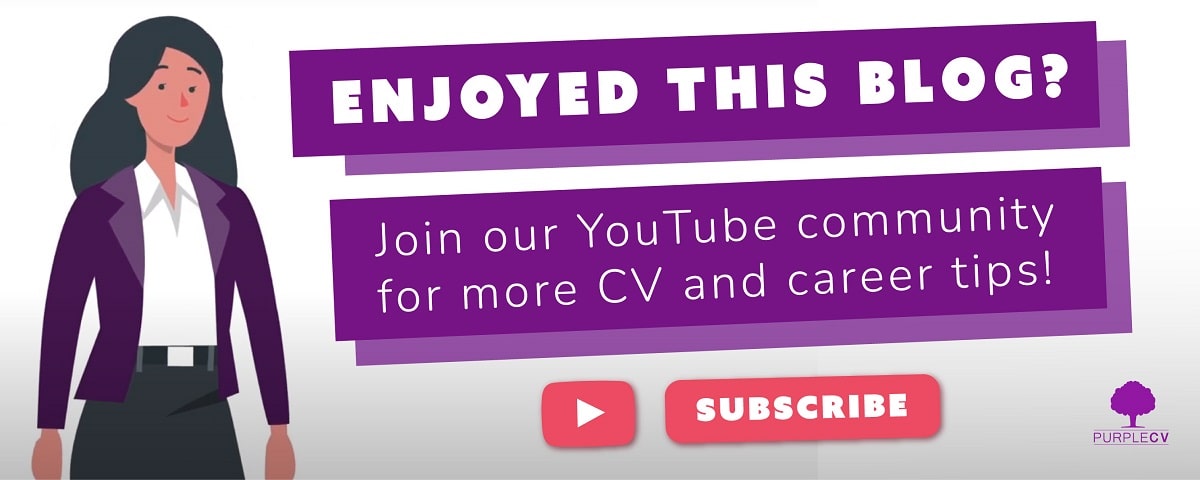Your CV is your ticket to your next job interview – but only if you get it right! To help you out, we’ve put together a guide that explains what to include in a CV.
When an employer asks to see your CV, what they want to see is a document that proves why you’re the perfect candidate for the job. They want to see what it is that will make you fit in better at their company than all the other applicants.
As such, you should read the job description carefully and tailor your CV accordingly. But no matter what job you’re applying for, there are certain things you should always include.
Read on to find out what to include in a CV…
Your contact details
Your contact details are absolutely essential – forget them at your peril! Make sure you include your name, address, telephone number and email address so that potential employers can contact you.
Personal statement
A personal statement is a great way to give your CV a bit of extra clout. It should be a short paragraph that sums up what makes you right for the role, and makes the reader want to know more about you.
It should draw attention to the most important elements from your skills and experience – the highlights, as it were. It should succinctly communicate who you are, what you’ve done so far that qualifies you for the position, and what you’re aiming to do next in your career.
For more advice on writing a winning personal statement, check out this article.
Your employment history
Your employment history should be written in reverse chronological order, with your current or most recent position first.
For each position, include your job title, the name of the company or organisation, its location, its website and the dates you were employed in that role.
Include a couple of bullet points highlighting your main responsibilities and achievements for each entry, so that potential employers can see at a glance how well your experience matches up to the role you’re applying for.
Don’t include jobs that are irrelevant to the role you’re applying for – unless you’re a graduate with little or no other work experience. In this case, find parallels between the job description and your responsibilities in any previous roles.
Get that CV written by us!
Early Career CV
0-3 Years' ExperienceNext Step CV
3-10 Years' ExperienceAdvanced Career CV
Over 10 Years' ExperienceSpecialist CV
For Niche ProfessionsYour education and qualifications
Again, list your education history in reverse chronological order. Include details of any academic or professional qualifications you’ve gained, listing the name of the institution, the qualification, and the dates you attended.
If you have a significant amount of work experience, there’s no need to list all your school grades. In general, the more work experience you have, the less detail you should include in the education section. However, if you have a qualification that’s particularly relevant to the role you’re applying for, make sure to highlight it.
If you’ve recently left school or university, give your education more prominence. Highlight your degree, A level or GCSE results, listing the subjects you studied and your grades. This is a good way to sell yourself if you don’t yet have much work experience.
Other skills, experience and achievements
This is where to list any other skills or achievements that demonstrate your suitability for the role.
If you can speak any other languages, list them here. Detail any IT packages you’re competent with, and if it’s relevant, mention your driving licence (but only if you have one, of course!) This is also a good place to mention any volunteering you’ve done, especially if you have limited work experience.
What not to include in a CV
So now that we know what to include in a CV, let’s go over a few things you should leave out.
Personal details: this includes things like your age and marital status. It’s illegal for employers to ask you for this information, so there’s no need to include it.
References: if potential employers want references, they’ll ask for them. There’s also no need to write ‘references available on request’ – this goes without saying, and wastes valuable space!
Hobbies: telling potential employers that you like socialising and going to the cinema is unlikely to win you any points. Leave it out!
What to include in a CV: a summary
We hope our guide has given you a good idea of what to include in a CV.
Remember, your CV is designed to convince potential employers that you’re the perfect person for the job, so always think about how you can link the information you include to the job description.
Want to take the hassle out of CV writing? Let one of our professional CV writers do it for you!


